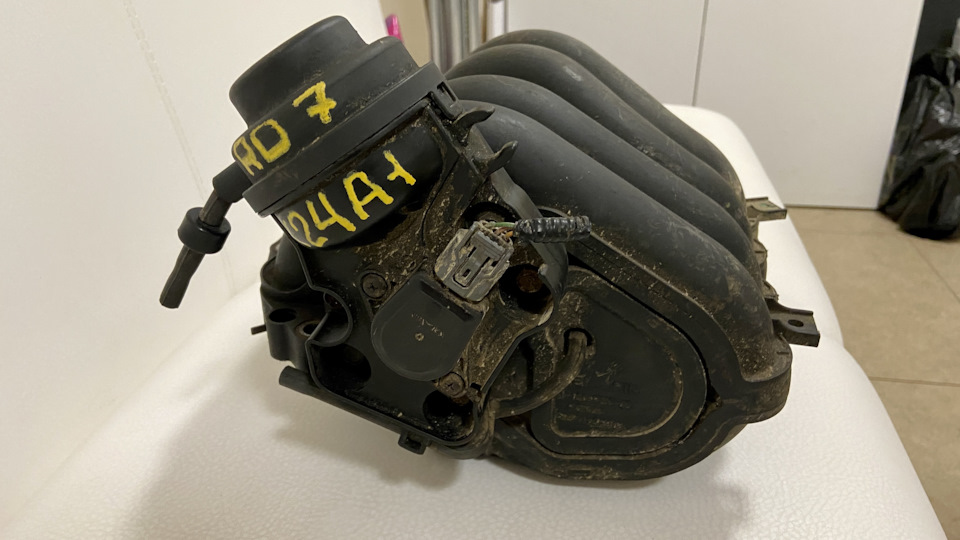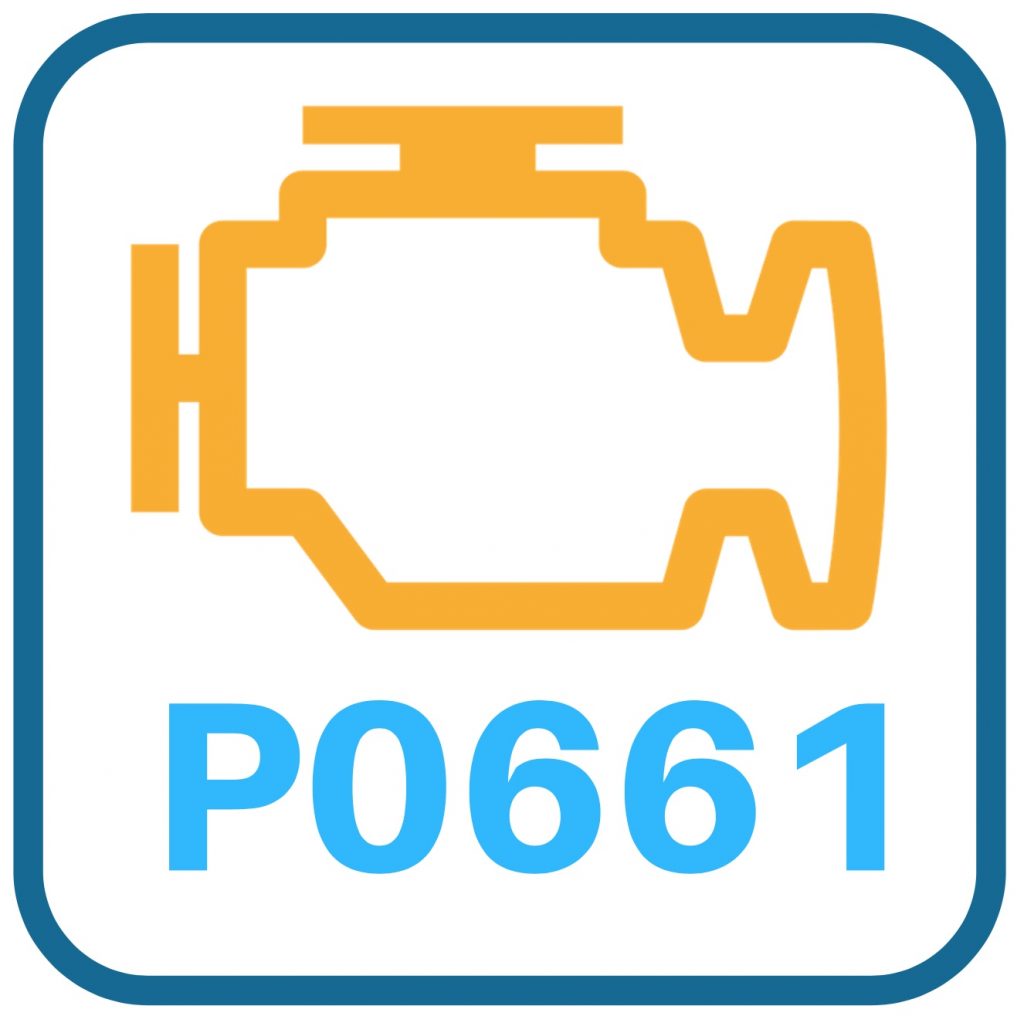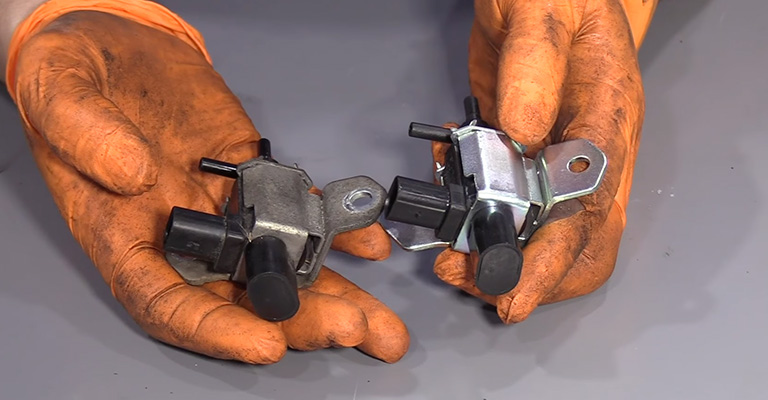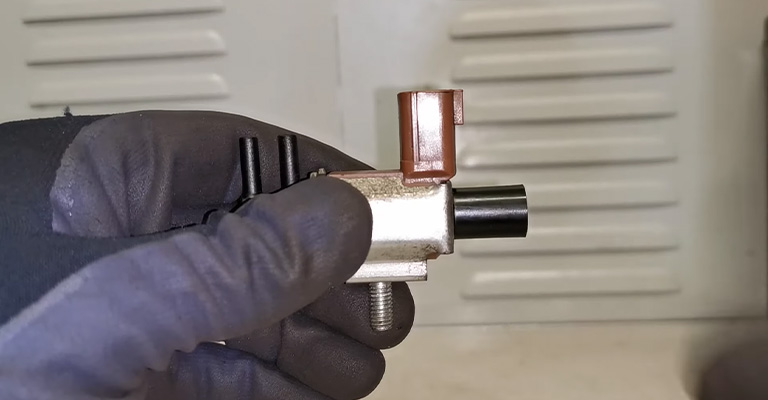Всем привет, друзья!
В общем не так давно столкнулся со следующими проблемами:
1. Трасса, скорость примерно 100-110 км/час. Выхожу на обгон, педаль газа утапливаю где-то до половины, происходит подхват — Бродяга резко бросает тахометр на 4000-4200 оборотов и начинает ускоряться! Допустим, этого мало?! Жму педаль в пол и ничего не происходит…
Машина все так же разгоняется, плавно набирая скорость и обороты так же растут постепенно…
Хм…четкое ощущение, что наверное должен быть сброс на передачу вниз и обороты под 5000, с довольно ощутимым ускорением? Но этого нет…
Так же при плавном разгоне, на 4500 тоже подхвата нет…едет и едет себе, хотя говорят после 4500 должен быть подхват, т.к. меняется геометрия впускного коллектора, как раз для мощности на высоких оборотах…
2. Дальше, раза два в этом году, «отрыгивал» VTEC (P1259), хотя после глушения двигателя и повторного старта ошибка исчезала, машина работала как полагается, но тоже вызывает вопросы и переживания(
3. Решил провести небольшой эксперимент…где то с 20-30 км/час, утопил педаль в пол и…а ничего не произошло! Вот совсем… Бросил педаль, нажал в штатном режиме, Бродяга «отрыгнул» VTEC(P1259). Остановился заглушил, завел, все норм.
Короче, хрень какая то…
Ну, думаю рыбу надо есть по частям))
Первое, самое банальное, пошел посмотрел уровень масла в коробке, все норм, пинков нет, задержек нет, масло свежее! Хм…
Дальше наверное лезть в АКПП и более сложные узлы, надо как минимум после того, как я буду уверен, что тот же двигатель исправен? Да и вообще может я себе придумываю?)
Пока из явного — VTEC в голову срет и уже год горит ошибка 0661 системы изменения геометрии впускного коллектора (IMT).
Оба узла, как я понимаю, отвечают за правильное распределение мощности, это возможно, связано с моими проблемами…а может и не связано)) В общем посмотрим…
1. Итак, для лечения клапана VTEC приобрел набор нужных расходников.
Решил на этом этапе, просто его снять, промыть и заменить все прокладочки и резиночки.
Так же по совету бывалых приобрел 3 болта крепления, говорят может возникнуть вопросец))
Напомню, что Бродяга у меня Американских кровей, со своими закидонами)
Поэтому, клапан VTEC у него слегка отличается от японского и европейского и имеет еще и датчик давления масла. У европы тоже он есть, у них там соленоид интересный))
Поэтому, номерки в итоге такие:
— Honda 15815-RAA-A02 — прокладка с фильтрующей сеточкой
— Honda 91319-PAA-A01 — кольцо уплотнительное датчика давления масла
— Honda 15832-PNA-003 — кольцо уплотнительное соленоида
— Honda 95900-060-5508 — болт (3 шт.)
Ну, вроде ничего не забыл?! Отдельное спасибо HOLODILHIK подсобил с подбором номерков!
2. Ошибка P0661…так вообще, просто вынесла мне мозг!
Если просто погуглить, то эта ошибка говорит о неисправности электромагнитного клапана в системе IMT.
Но мы же на американцах, а у них оказывается есть свои расшифровки ошибок!
Так вот P0661 или 107, говорит о низком напряжении в цепи датчика положения системы IMT.
Ну и естественно этот датчик стоит, только на американских моделях))
Японцы и европейцы значит, как то без датчика живут, а тут видишь чего…
В общем начитался кучу инфы, и что нужно снять коллектор и все там прочистить в этой системе и проверить работоспособность самого клапана IMRC, который заслонкой управляет и подуть туда, что бы понять целая там мембрана или нет, т.к. клапан ваккумный…короче жуть какая то(((
Попробовал подуть, вроде что то там шелестит)
Датчик, как это обычно бывает у американцев, хрен купишь…в итоге воооот:
— Honda 17105-PNA-J01 — прокладка впускного коллектора (2 шт.)
Собрал все это дело в кучу и повез в сервис, к мастерам рукастым))
Задачи следующие:
1. Клапан VTEC снять, помыть, поменять все прокладки и кольца + новые болты.
2. Система IMT, заменить на узел в сборе, предварительно промыть и почистить его.
3. Раз уж полезли туда, чистка дроссельной заслонки! Лишним не будет!
Часов 5 они Бродягу ковыряли, в итоге результат следующий:
1. Ошибка P0661 погасла! Это уже радует) Чисто субъективно увеличилась динамика по городу…хотя, субъективно конечно.
2. Перестали плавать обороты ХХ. Было что на холодную плавали пока не прогреется. Возможно чистка дроссельной помогла решить вопрос?
3. Переходим к натурным испытаниям:
Тест 1.
Выезжаю на трассу — скорость около 30-40 км/ч по моим ощущениям 2-я передача, резко жму газ…обороты кидает до 5000 и крутит до 6500 где-то, потом переключение на 3-ю, так же в районе 6000-6500 и далее на 4-ю. После поднимаются до 4000-4100 и начинают расти уже постепенно до 5000-5200. Дальше ногу с газа убрал, т.к. скорость подошла к 140 км/ч. Сыкотно…да и движение около города плотновато по трассе.
Ну как то так?! По моим ощущения вроде все достаточно штатно. Конечно, дикого ускорения я не почувствовал, в сиденье не вжимало! Но наверное и не должно?
Тест 2.
Скорость 110-120 км/ч, 4-я передача, обороты где то 2000-2500 плюс/минус.
Жму резко педаль в пол, обороты подкидывает до 4000-4200 и начинается плавный разгон с соответствующим повышением оборотов и ростом скорости. В момент «прыжка» с 2000 до 4000 оборотов, есть подхват. Ну и все в принципе. Ни какого сброса на 3-ю нет. Просто плавный разгон.
Тест 3.
Скорость 80-90 км/ч, 3-я передача…резко педаль в пол, подхват, обороты взлетают до 6000 с копейками, переключение на 4-ю и далее с 4000 опять набор скорости с плавным повышением оборотов.
Тест 4.
Нажата кнопка O/D, скорость 30-40 км/ч, 2-я передача…резко в педаль в пол, обороты 6000 с копейками, переключение на 3-ю и далее с 4000 опять набор скорости с плавным повышением оборотов.
На этом тест окончен))
Гонял в разных режимах, на разных скоростях и т.п.
ИТОГ:
1. Принцип получился такой, если передача не «последняя», а 3-я например…то двиг раскручивается легко до 6500 и потом АКПП втыкает последующую передачу (4) и дальше с 4000 плавно продолжает разгон.
Так же происходит если «искусственно» последней сделать передачу 3, через O/D.
На передачах 1,2,3 свободно раскручивается до 6500 и АКПП переключает дальше.
2. VTEC глючить перестал)
3. Работу системы IMT (изменение геометрии коллектора) по ощущениям не заметил… Явного подхвата ни на 4000, ни на 4500 я не увидел, честно говоря. А должен?
В общем ребята как то так!
Если есть опыт поделитесь, как себя ведет машина у вас в таких же условиях, что тестировал я?
Может я много хочу от Бродяги?)
Автор:
Rosa Flores
Дата создания:
19 Март 2021
Дата обновления:
19 Сентябрь 2023
Содержание
- Возможные причины
- Когда код обнаружен?
- Возможные симптомы
- P0661 Honda Описание
- P0661 Honda Информация для конкретных моделей Honda
Возможные причины
Когда код обнаружен?
Если выходное напряжение датчика положения клапана управления впускным коллектором (IMRC) ниже заданного значения, обнаруживается неисправность и устанавливается код P0661.
Возможные симптомы
Датчик положения клапана управления впускным коллектором (IMRC) установлен на валу клапана IMRC и определяет положение клапана IMRC. Датчик положения клапана IMRC включает в себя щетку, которая перемещается вместе с клапаном IMRC, и имеет линейный выходной сигнал относительно положения клапана IMRC при скольжении по плате. Модуль управления двигателем (ECM) контролирует напряжение датчика положения клапана IMRC, которое представляет положение клапана IMRC. Если выходное напряжение датчика положения клапана IMRC выше установленного значения, обнаруживается неисправность и сохраняется код неисправности.
P0661 Honda Информация для конкретных моделей Honda
Степень важности ремонта : 3
Степень сложности ремонта : 3
- Неисправен датчик управления бегунком впускного коллектора (IMRC)
- Обрыв или замыкание жгута проводов системы управления впускным коллектором
- Некачественное электрическое соединение цепи управления впускным коллектором.
Как исправить код p0661 2002 honda cr-v?
Начните с проверки ‘Возможных причин’, перечисленных выше. Визуально осмотрите жгут проводов и разъемы. Проверьте наличие поврежденных компонентов и поищите сломанные, погнутые, вытолкнутые или проржавевшие контакты разъема
Код p0661 2002 honda cr-v технические заметки
Возможно, необходимо очистить или заменить регулятор хода впускного коллектора. Регулятор впускного коллектора может продаваться отдельно или вместе с впускным коллектором, позвоните местному дилеру, чтобы узнать об этом
Сколько стоит диагностика кода p0661 2002 honda cr-v?
Трудозатраты: 1. 0
Стоимость диагностики кода P0661 2002 Honda CR-V составляет 1,0 час труда. Время диагностики и трудозатраты автосервиса зависят от местоположения, марки и модели автомобиля и даже типа двигателя. Большинство авторемонтных мастерских берут от 75 до 150 долларов США в час
Когда обнаруживается код p0661 2002 honda cr-v?
Если выходное напряжение от датчика положения клапана Intake Manifold Runner Control (IMRC) ниже установленного значения, обнаруживается неисправность и устанавливается код P0661
Каковы возможные симптомы кода p0661 2002 honda cr-v?
- Горит лампа двигателя (или предупреждающая лампа Service Engine Soon).
Что означает код p0661 2002 honda cr-v?
Мощность двигателя достигается путем закрытия и открытия клапана управления впускным коллектором (IMRC). Когда клапан закрыт, обеспечивается высокий крутящий момент при низких оборотах двигателя. Когда клапан открыт, возникает высокий крутящий момент при высоких оборотах двигателя. Датчик положения клапана управления впускным коллектором (IMRC) установлен на валу клапана IMRC и определяет положение клапана IMRC. Датчик положения клапана IMRC включает в себя щетку, которая перемещается вместе с клапаном IMRC, и имеет линейный выходной сигнал относительно положения клапана IMRC при скольжении по плате. Модуль управления двигателем (ECM) контролирует напряжение датчика положения клапана IMRC, которое представляет собой положение клапана IMRC. Если выходное напряжение датчика положения клапана IMRC превышает установленное значение, обнаруживается неисправность и сохраняется DTC
P0661 is a relatively rare OBD2 trouble code. It indicates that the electrical reading coming from your Honda CR-V’s intake manifold tuning valve control circuit (on the bank 1 side) is below its specified operating range.
While P0661 is a generic code, so it has the same definition for all vehicles.
P0661 Definition: Intake Manifold Tuning Valve Control Circuit Low (Bank 1)
Here is the definition of P0661 for the Honda CR-V, broken down by its three parts.
Intake Manifold Tuning Valve Control
The intake manifold tuning valve control system is responsible for redirecting the air in your CR-V’s intake manifold.
It relieves air pressure on the opposite side of the intake manifold. Or, it can channel air down a completely different runner for power/efficiency purposes.
Circuit Low
The ECM or PCM (your CR-V’s central computer) receives a signal from the intake manifold tuning valve. There is a minimum and maximum voltage range that the PCM expects to see.
P0661 will be stored in the computer’s memory when this voltage level is below the minimum level.
If there is no voltage at all, you will get P0660. That code indicates that the intake manifold tuning valve circuit is open.
Bank 1
Bank 1 is the part of your vehicle’s engine with the first cylinder. You don’t need to concern yourself with this if you have an inline four-cylinder engine or inline-six.
Honda CR-V P0661 Symptoms
While you may not even notice anything wrong when your CR-V has P0661, we recommend having your vehicle looked at as soon as possible due to the location of the intake manifold tuning valve. If it were to break up (however unlikely that would be) the engine could blow.
Here are some of the most common causes of P0661.
- Repeated clicking noise from the intake (likely the intake manifold tuning valve has failed)
- Misfiring (due to poor air-fuel mixture)
- Engine down on power across the RPM range
- Decreased fuel mileage
- Rough idle
Here are the most common causes of P0661, as well as a solid diagnostic order to approach repairing your CR-V.
1. Check for Manufacturers Communications
Honda send communications via “technical service bulletins,” commonly referred to in the industry as TSB’s. While this site doesn’t keep a database of them, they are easy to find online.
If you click on the link above, it’ll take you to the NHTSA website in a new window. Look for your exact make, model year, and engine type. A TSB related to the intake manifold tuning valve gives you a great place to start your diagnosis with a known point of failure. It is imperative that you use the right model year, as the bulletins change from year to year.
2. Inspect the Wiring Harness
Start by locating the intake manifold tuning valve wiring harness. It’ll be accessible on the intake manifold. Inspect the harness for damage going to and from it.
Make sure that the pins where it connects to the intake manifold tuning valve are not damaged or corroded in any way. If they are, you’ll need to repair, repin, or replace them as needed.
Rodent issues cause this code sometimes. They like to lay on the warm engine when it’s cold and can damage the wiring harness, particularly around the intake.
3. Check for Voltage
Using a voltage meter, ensure that the wiring harness going to your CR-V’s intake manifold control circuit has the proper voltage. Check right at the harness going to and from the intake manifold tuning valve.
- If it does have the proper voltage leading to it, check to see if the signal returning to the PCM has a voltage level that’s within range.
- If the return voltage signal is too low, it’s likely that the intake manifold tuning valve has gone bad.
- If the return voltage IS WITHIN RANGE that you still should check it as it enters the PCM. If it’s dropped, you may have an issue as it travels through the wiring system.
Make sure that the ground used for the intake manifold tuning valve is solid. If it’s loose or looks like there could be corrosion underneath it, that could easily cause P0661.
4. Command the Intake Manifold Tuning Valve to Come On
Most higher-quality scanners can tell your CR-V’s intake manifold tuning valve to come on. If you hear a clicking sound coming from the intake when it’s on, that indicates that the tuning valve is binding or obstructed.
Unless you’ve run the vehicle without an air filter, it’s not very plausible that something got stuck in there, but not implausible. Check your air filter for a chipmunk nest or other rodent issue. If it looks good, you should be able to rule out obstruction.
That leaves binding, which can happen. These tuning valves are usually made from plastic and can and will bind and P0661 will be stored in the PCM’s memory.
5. PCM
It is rare that a PCM goes bad, but it does happen. If the voltage looked good coming in and out of the intake manifold tuning valve, and the voltage level going to the PCM is correct, that would be enough evidence to consider the PCM is bad.
Have a professional mechanic take a look at it before you get a new PCM to clear P0661. They can verify that you didn’t miss something. And, they have diagnostic equipment that can pinpoint voltage drops quickly and easily.
Conclusion
While there are quite a few reasons that your Honda CR-V may have P0661, the most common are wiring problems or a bad intake manifold tuning valve. Good luck diagnosing your vehicle!
P0661 is a diagnostic trouble code (DTC) that is specific to Honda vehicles. It is a generic powertrain code, which means that it applies to all makes and models of Honda vehicles from the year 1996 onwards.
The P0661 code is related to the intake manifold runner control (IMRC) valve, which controls air flow through the intake manifold.
When the IMRC valve fails to function properly, it can trigger the P0661 code, indicating a problem with the valve’s circuitry or position sensor.
This code can cause various vehicle performance issues, including reduced power, poor fuel economy, and rough idling.
It is important to have this code diagnosed and repaired as soon as possible to prevent further damage to the engine and ensure optimal vehicle performance.
P0661 Honda Code – Intake Manifold Runner Control Valve Position Sensor Circuit Low Voltage
The diagnostic trouble code (DTC) P0661 refers to an intake manifold tuning valve control circuit issue. Your mechanic must diagnose the specific cause of your vehicle’s malfunction to determine why this code was triggered.
What Does the P0661 Honda Code Mean?
Typically, the P0661 code indicates that the PCM or another control module has detected a lower voltage from the intake manifold tuning valve control circuit than the automaker specifies.
Activating and closing the Intake Manifold Runner Control (IMRC) valve produces engine power. During low engine speed, high torque is achieved when the valve is closed. High torque and high engine speed are observed when the valve is open.
An Intake Manifold Runner Control (IMRC) valve position sensor is mounted on the valve shaft and detects the position of the IMRC valve.
Regarding the IMRC valve position when sliding on the board, the sensor includes a brush that moves with the valve, producing a linear signal response.
IMRC valve position sensor voltage, representing the IMRC valve position, is monitored by the Engine Control Module (ECM). The DTC is stored if the output voltage from the IMRC valve position sensor is higher than the set value.
Therefore, a P0661 code will be stored in the computer in the car if the PCM or another module detects that the voltage reading from the intake manifold tuning valve control circuit is low.
The code is monitored in self-tests conducted both with the key on/engine off and then with the key on/engine running. The code can take up to eight drive cycles to become active.
What Causes The P0661 Code?
You may encounter the P0661 code for a variety of reasons, including:
- Faulty fuel injector control module
- An open or short in the intake manifold tuning valve control circuit
- A loose connection within the circuit
- A bad driver in the PCM (likely)
- A faulty intake manifold tuning valve
What Are The Symptoms Of The P0661 Code?
It is possible to experience the following symptoms when you receive the P0661 code:
- Check Engine Light on
- Engine stalling
- Rough engine operation at idle
- Reduced fuel economy
- Reduced acceleration
How Does A Mechanic Diagnose The P0661 Code?
To diagnose the P0661 code, you use a handheld OBD II scanner to determine what codes are stored in your car’s computer. The mechanic will note those codes and clear them; then, the vehicle will be tested to determine if they are reset.
It is also necessary that the mechanic visually inspect all the wiring and connectors in the intake manifold tuning valve control circuit for opens, shorts, corrosion, or other damage. The most common issues are loose/poor connections or damage to the wiring harness.
In place of testing each individually, the mechanic should use an advanced scanner to determine the general area of the problem. Furthermore, a CAN scanner may be needed to isolate CAN bus malfunctions.
One of the most common causes of the P0661 code is a failed driver, so the mechanic should also check the PCM. Testing will also be required for the intake manifold tuning valve.
Test driving is required to determine the vehicle’s drivability and proper operation after the underlying problem has been diagnosed and repaired.
Basic Troubleshooting Steps
To troubleshoot a malfunction, the first step is to research Technical Service Bulletins (TSB) for the specific vehicle.
Diagnostic steps require advanced equipment and knowledge to be performed accurately and are often very vehicle specific.
Listed below are the basic steps for a repair, but for specific steps for your vehicle, please refer to the repair guide for your particular year, make, model, and powertrain.
Basic Step #1
A DIYer should always clear all diagnostic codes after a DTC (Diagnostic trouble code) is activated by the ECM to make sure it doesn’t return.
To test whether the vehicle becomes active again after a few duty cycles, drive it for a long time and numerous times.
Reactivate the code. If it does, diagnose the active code(s).
Basic Step #2
Your first step will be to locate the intake manifold tuning valve. Intake manifolds are usually installed internally, so this is difficult to accomplish.
Thus, inspect the connector for the valve visually for broken tabs, melted plastic, etc., if it is relatively accessible. Check that the electrical connection is adequate.
Basic Step #3
With this tool, you may be able to electronically operate the valve depending on its capabilities. This might be an effective way of determining if the valve is operating at its maximum capacity.
The intake manifold tuning valve can also be responsible for clicking noises coming from your intake, so it is a good idea to check it.
You likely have an obstruction in the intake, or the valve itself is stuck. If you hear abnormal clicking while adjusting the sensor with your scanner, there may be an obstruction.
The next step would be to remove and inspect the valve physically and inside the intake manifold for obstructions.
Replace the valve if there are no obstructions and there is clicking; this is probably the cause.
It can be challenging to work on these projects in some cases, so make sure you do your research before taking on the task so you won’t get stuck without the right parts, tools, etc.
Common Mistakes When Diagnosing The P0661 Code
This common mistake leads to addressing related symptom codes instead of the underlying issue.
An example would be a misfire code present, but that is not the actual problem, and fixing it will not correct the original cause of the code.
It is important that the mechanic starts with the earliest code and works forward until he reaches the latest to provide an accurate diagnosis.
How Serious Is The P0661 Code?
Depending on the specifics of your case, this may be nothing to be concerned about or something much more serious and damaging.
Tuning valves for intake manifolds are mechanical parts that can be rather complicated. Err on the side of caution when dealing with mechanical parts.
Please keep in mind that unwanted parts can enter the engine’s combustion chamber if you put off doing this.
Although P0661 is stored in your car, you may still be able to drive it. This code, however, can result in drivability issues in the future, so you must get it fixed immediately.
What Repairs Can Fix The P0661 Code?
The most common repairs for the P0661 code include the following:
- Reinstalling the driver in the PCM
- Replacing a failed intake manifold tuning valve
- Repairing loose or corroded connections in the wiring for the intake manifold tuning valve
Final Words
Diagnosing the P0661 code can be challenging since there are many possible issues, and circuit/wiring testing alone can be time-consuming. To solve a problem, we need to diagnose the underlying cause rather than just change parts.
Although many things can cause the P0661 problem, the most common is that your Honda’s intake manifold tuning valve is faulty. Your vehicle needs to be diagnosed. Good luck!















